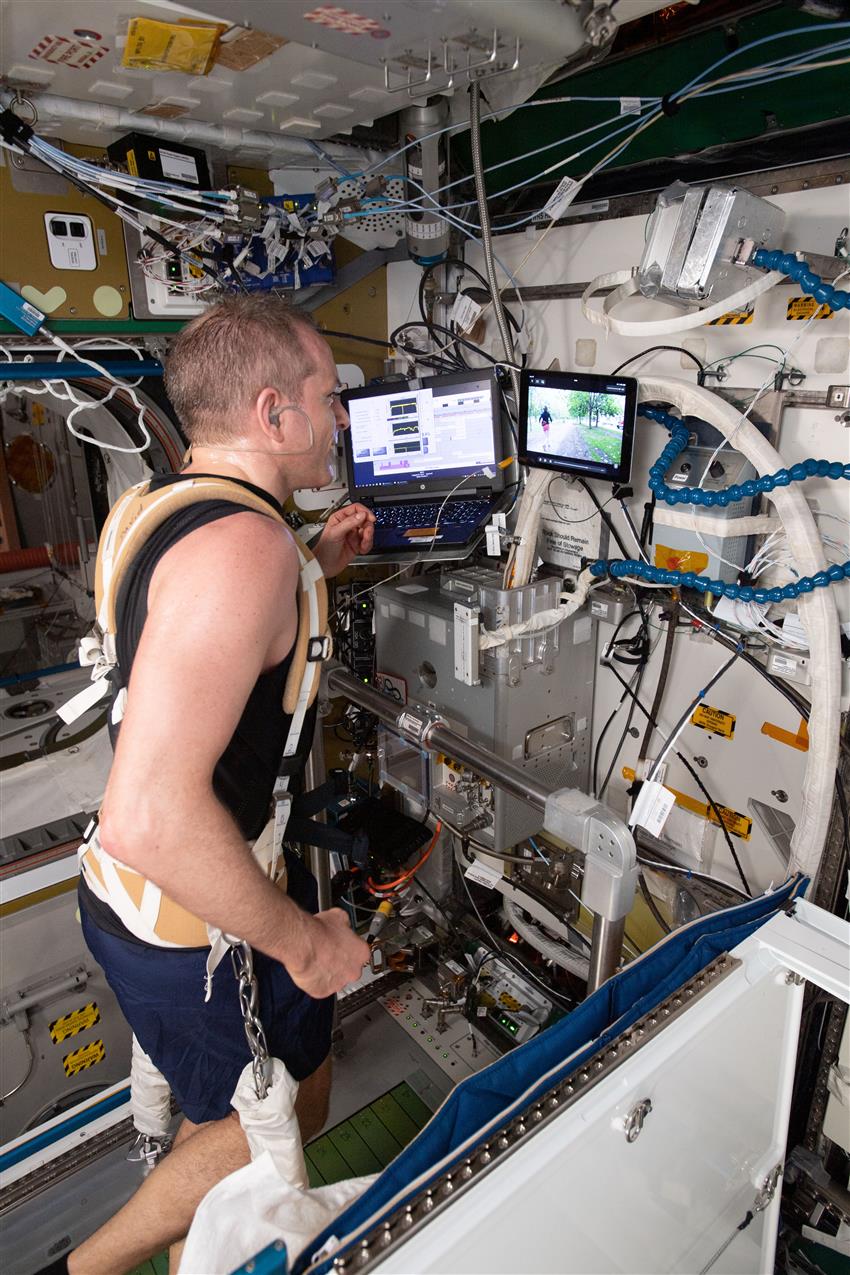Return and Reconditioning
Difficulty: Moderate
Duration: 30 minutes of class time + homework
Materials: Minimal
Background
When astronauts return to Earth, they begin an extensive rehabilitation process. During long-duration space missions, astronauts lose muscle mass and bone density despite a rigorous exercise schedule. Astronauts lose, on average, 1% to 2% of their bone mineral density every month. The best way to build bone mass is by doing weight-bearing exercises such as walking, jogging, volleyball, and basketball. However, it is very difficult to duplicate weight-bearing exercise in a weightless environment. Astronauts must use restraints to strap themselves to a treadmill in order to create the necessary weight-bearing environment. Although this countermeasure slows the rate of bone loss, it does not eliminate the problem altogether.
On Earth, we must constantly use certain muscles to support ourselves against the force of gravity. These muscles, commonly called antigravity muscles, include the gastrocnemius (calf muscles), the quadriceps (thigh muscles), and the muscles of the back and neck. Without regular use and exercise, our muscles weaken and deteriorate, a process called atrophy.
Astronauts can regain their bone density and muscle mass upon returning to Earth. Reconditioning begins right after a mission ends and lasts 21 days or longer. In order to counteract the effects of living and working in microgravity, astronauts must dedicate themselves to a healthy lifestyle and fitness regimen.
For more information on the effects of microgravity on the body and exercise in space, watch these videos:
- TBone – Effects of Microgravity on Bones with Astronaut Tim Peake
- CSA Presents: The Hadfield Shake
- David Saint-Jacques explains how the Bio-Monitor smart shirt system keeps an eye on astronauts' vital signs in space
Mission description
This activity is designed for participants to understand what it is like for astronauts to go through reconditioning after returning to Earth from a long-duration space mission. Participants will commit themselves to tracking their daily habits over seven days. Participants will use the 24 Hour Movement Guidelines from the Canadian Society for Exercise and Physiology for youth aged 5 to 17.
Participants are encouraged to use the Build Your Best Day interactive Web experience to learn how their lifestyle compares to the 24 Hour Movement Guidelines.
Timeline
| Description | Duration |
|---|---|
| Introduction of activity | 20 minutes |
| Homework | Variable |
| Wrap-up | 10 minutes |
| Total | 30 minutes class time + homework |
Goal
To encourage a healthy lifestyle and adherence to the 24 Hour Movement Guidelines.
Objectives
By the end of this activity, participants will be able to identify:
- The effects of microgravity on the human body
- The recommended 24 Hour Movement Guidelines for the participant's age group
- The benefits of tracking physical activity, sedentary behaviour, and sleep
Mission preparation
Materials
- Computer and access to the Internet
- Paper/notebook for tracking
Mission instructions
- Activity facilitator gives brief lecture based on the background section of this document
- Participants track their physical activity, sedentary behaviour (especially screen time), and sleep for seven days using the 24 Hour Movement Guidelines
- Have participants summarize their experiences over three weeks. They can either share this with their peers or write it downFootnote 1

